| Massage and the Original Swedish Movements | ||
POSITIONS
Movements may be given or performed in many different positions of the body. It is necessary to
There are in Ling's system five principal or fundamental positions—viz.:
- 1. STANDING,
- 2. SITTING,
- 3. LYING,
- 4. KNEELING,
- 5. SUSPENDING OR HANGING.
Standing.—In this position, the legs, trunk, and head are erect. The heels should be together and the feet should form right angles. The arms should be kept at sides (see Fig. 38).
Sitting.—In this position the buttocks and the posterior part of the thigh rest against the chair or sofa. The legs, close together, form right angles with the thighs. The trunk and head should be erect (see Fig. 39).
Kneeling.—The body rests upon the knees and the anterior part of the legs. The feet should be kept outside of the supporting part, as demonstrated in Fig. 40.
Lying.—In this position, the patient's body rests against the sofa or bed with the head, the back and the legs (see Fig. 41).
Suspending.—In this position the patient is to grasp a
horizontal bar that is elevated so that the feet do not touch the floor.
There should be the
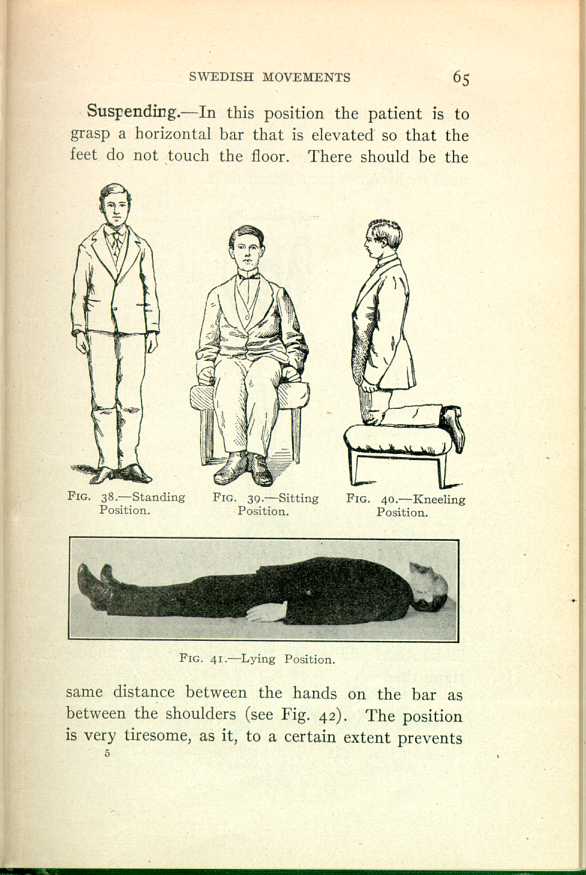
FIG. 38.—Standing Position
[Description:
Drawing of a man standing.
]
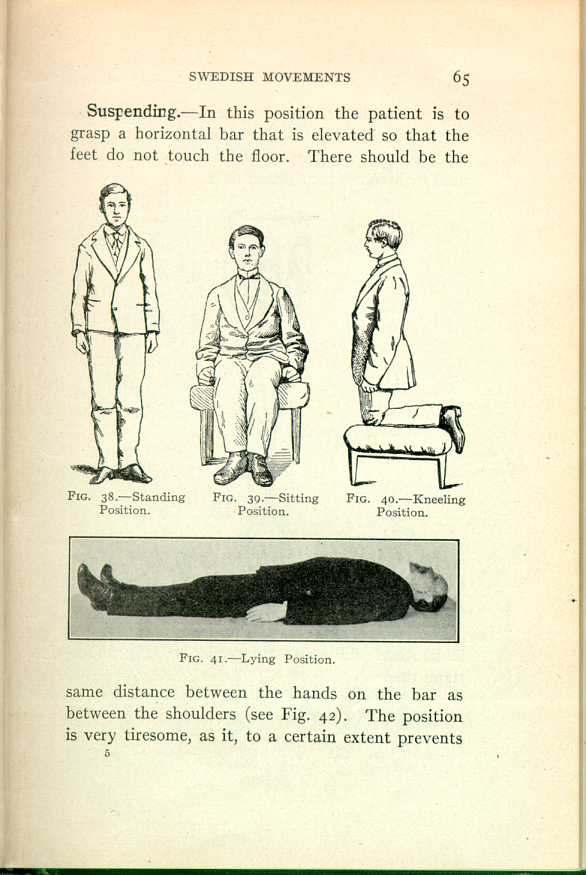
FIG. 39.—Sitting Position.
[Description:
Drawing of a man sitting on a bench.
]
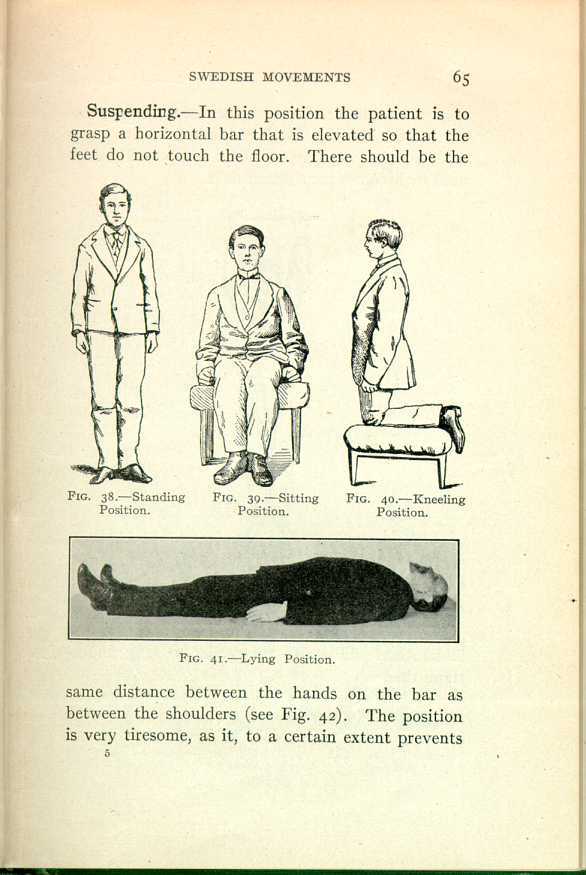
FIG. 40.—Kneeling Position.
[Description:
Drawing of a man kneeling on a bench.
]
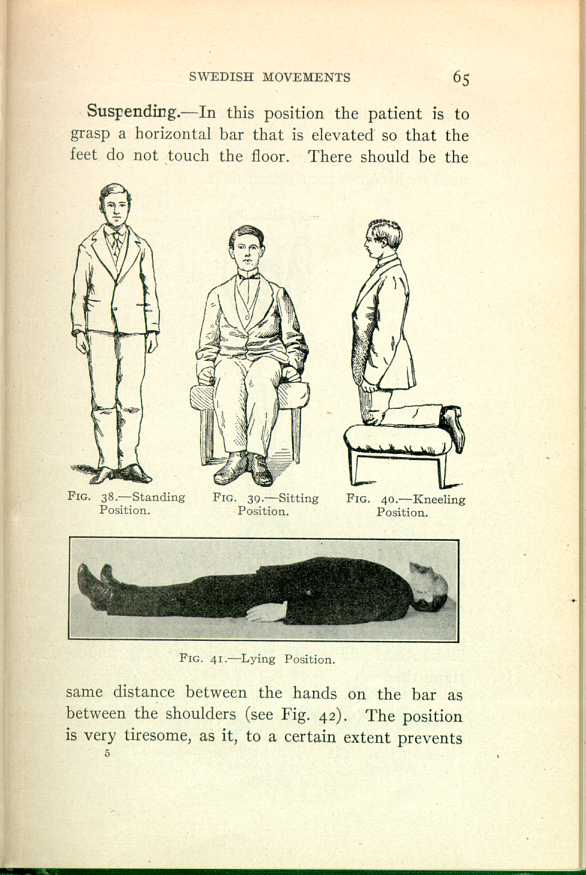
FIG. 41.—Lying Position.
[Description:
Photograph of a man lying down.
]
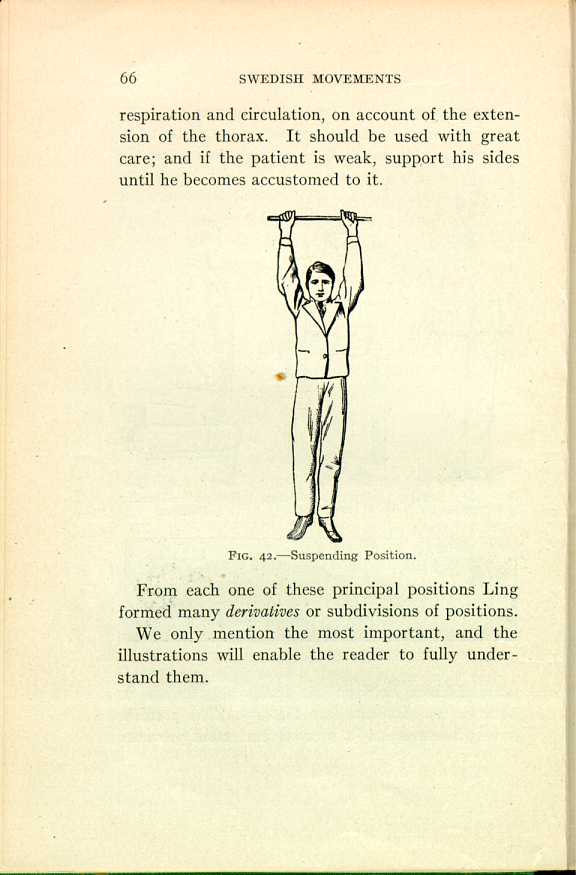
FIG. 42.—Suspending Position.
[Description:
Drawing of a man hanging from a bar.
]
From each one of these principal positions Ling formed many derivatives or subdivisions of positions.
We only mention the most important, and the illustrations will enable the reader to fully understand them.
- 1. With the Lower Extremities.
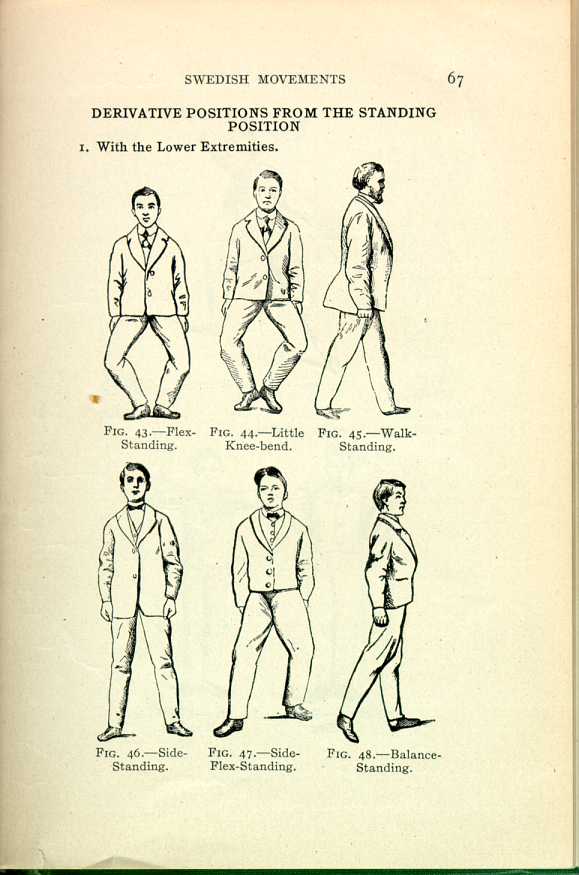
FIG. 43.—Flex-Standing.
[Description: Drawing of a man standing with his heels together and his knees bent. ]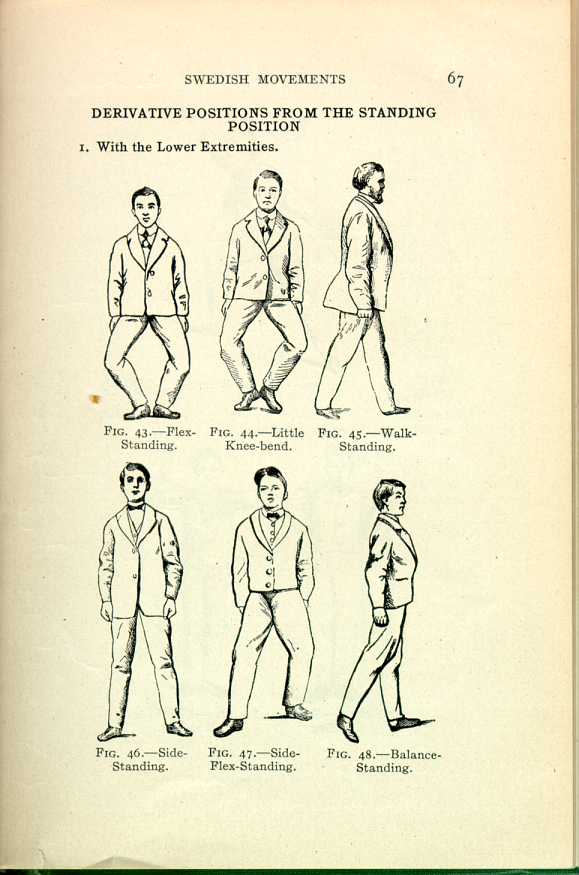
FIG. 44.—Little Knee-bend.
[Description: Drawing of a man standing on his toes with his heels together and his knees bent. ]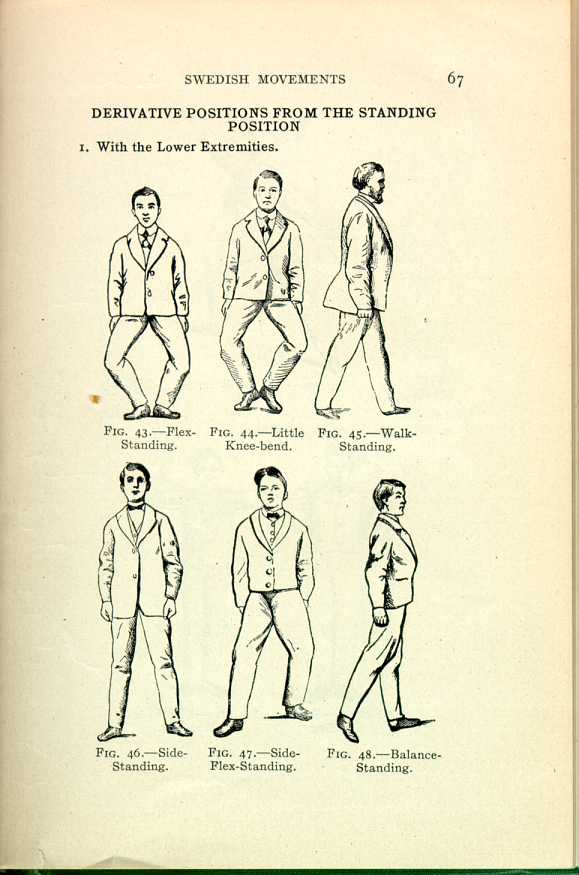
FIG. 45.—Walk-Standing.
[Description: Drawing of a man from the side with his left leg taking a step. ]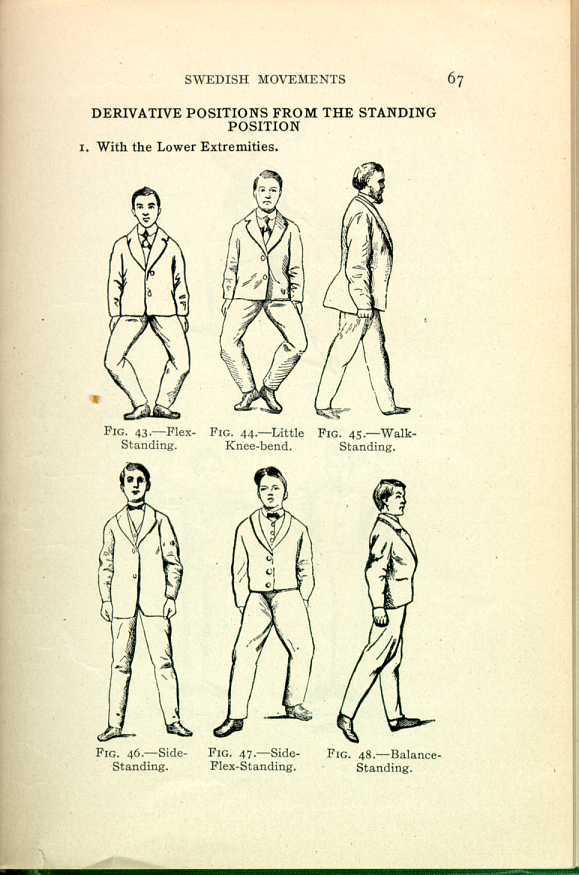
FIG. 46.—Side-Standing.
[Description: Drawing of a man standing with his feet spread apart. ]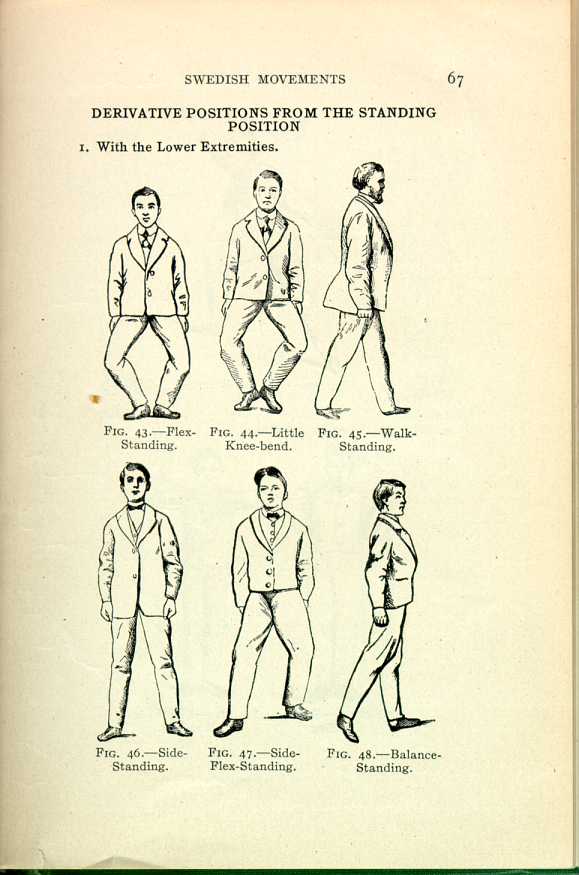
FIG. 47.—Side-Flex-Standing.
[Description: Drawing of a man standing with his feet apart and his right leg slightly extended. ]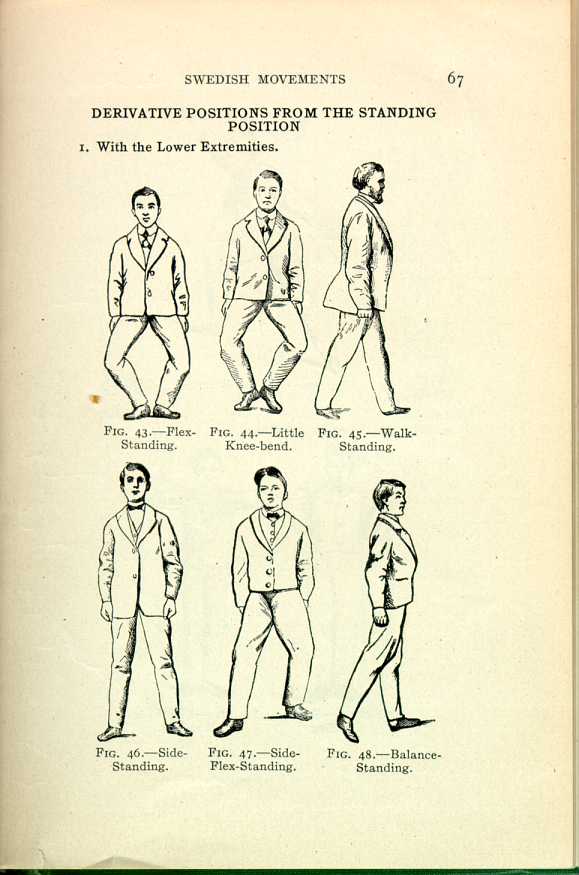
FIG. 48.—Balance-Standing.
[Description: Drawing of a man from the side, standing on his left foot. ]68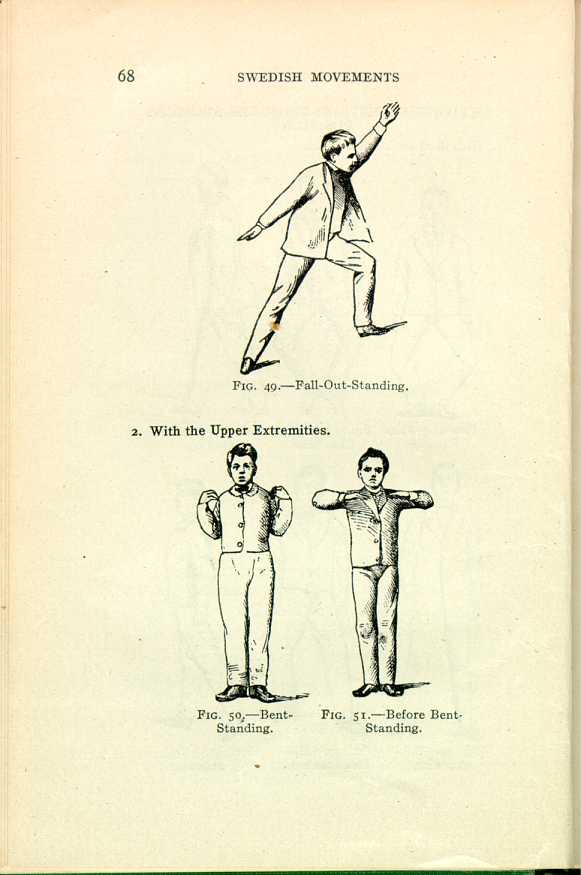
FIG. 49.—Fall-Out-Standing.
[Description: Drawing of man from the side, his left arm and leg extended to the front and his right arm and leg extended to the back. ] - 2. With the Upper Extremities.
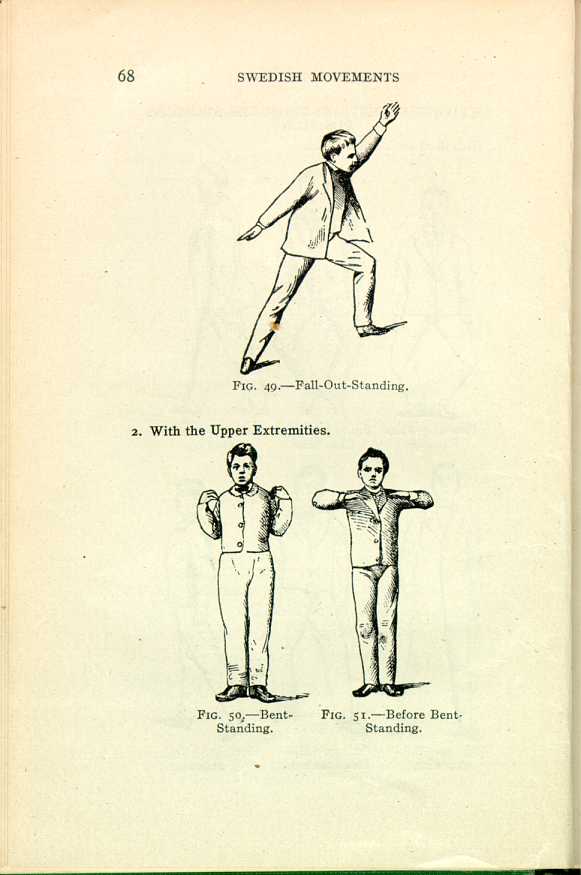
FIG 50.—Bent-Standing.
[Description: Drawing of a man standing, his fingers touching his shoulders. ]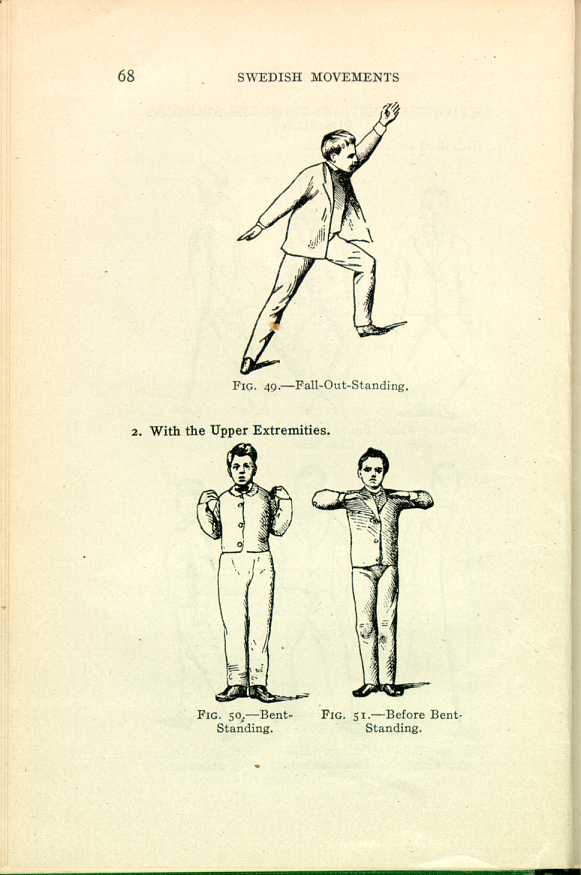
FIG 51.—Before Bent-Standing.
[Description: Drawing of a man standing, his elbows to the sides and his fingers extended. ]69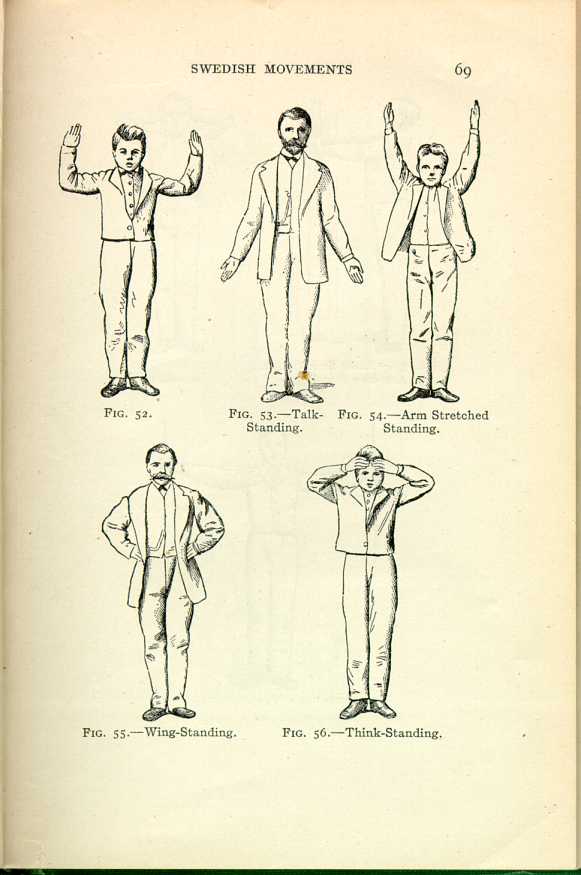
FIG. 52.
[Description: Drawing of a man standing, his arms stretched up and bent at the elbow. ]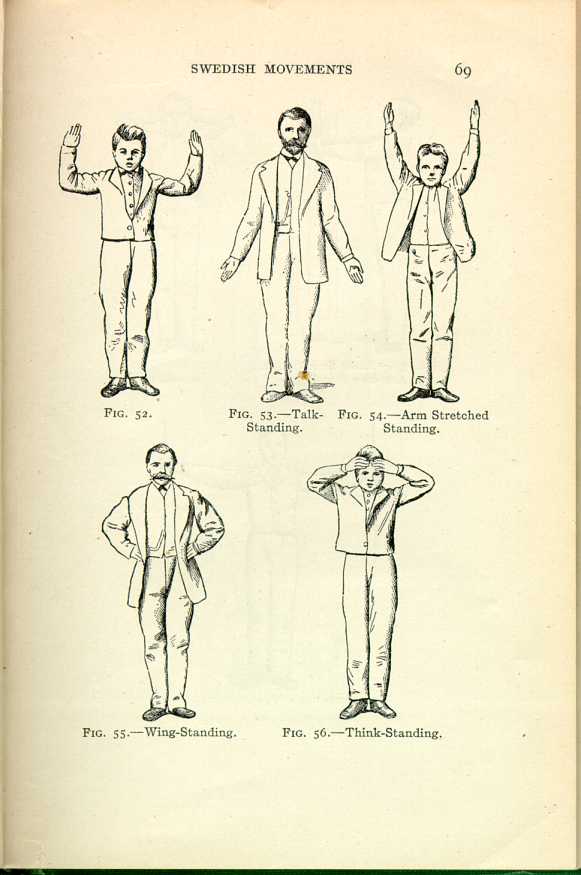
FIG. 53.—Talk-Standing.
[Description: Drawing of a man standing, his arms at his sides and his palms facing out. ]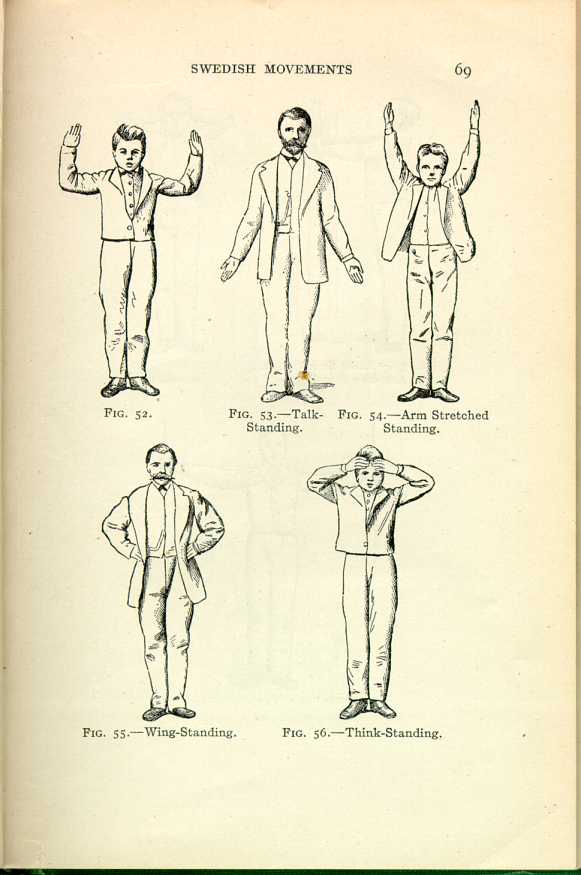
FIG. 54.—Arm Stretched Standing.
[Description: Drawing of a man standing, his arms stretched up. ]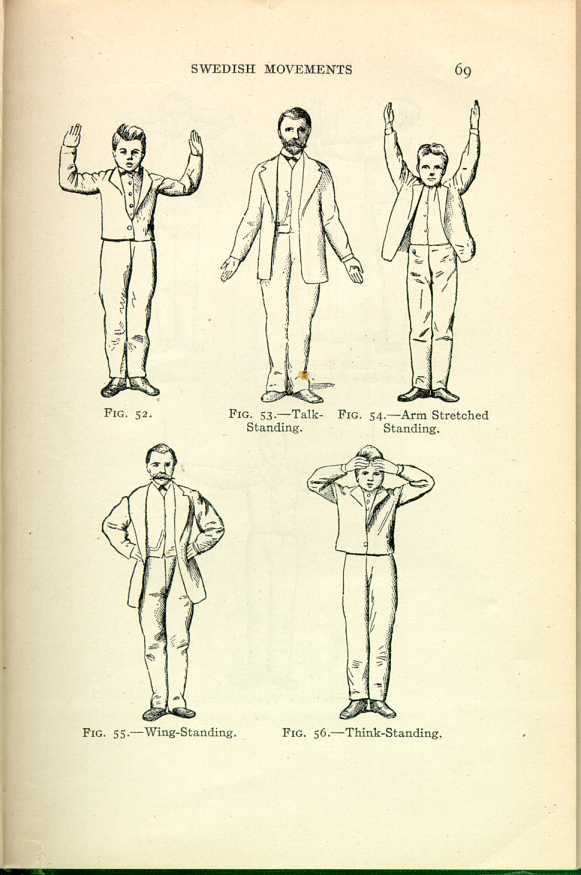
FIG. 55.—Wing-Standing.
[Description: Drawing of a man standing, his hands on his hips and his elbows pointing out. ]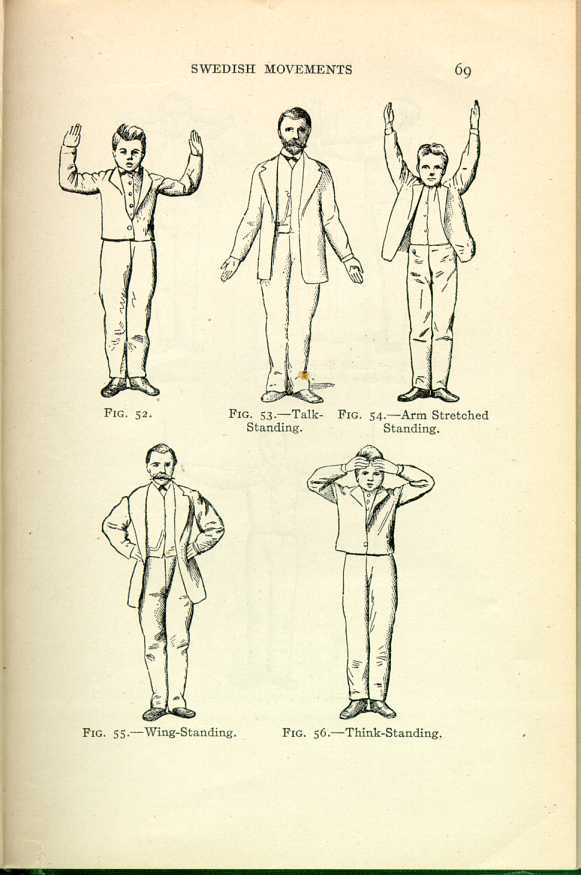
FIG. 56.—Think-Standing.
[Description: Drawing of a man standing, his palms against his forehead. ]70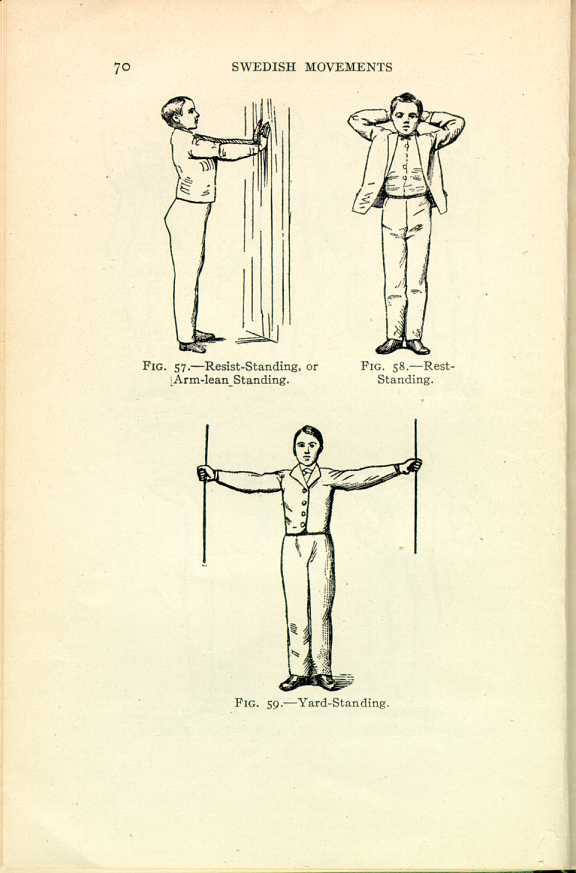
FIG. 57.—Resist-Standing, or Arm-lean Standing.
[Description: Drawing of a man from the side, his arms outstretched and pressed against a wall. ]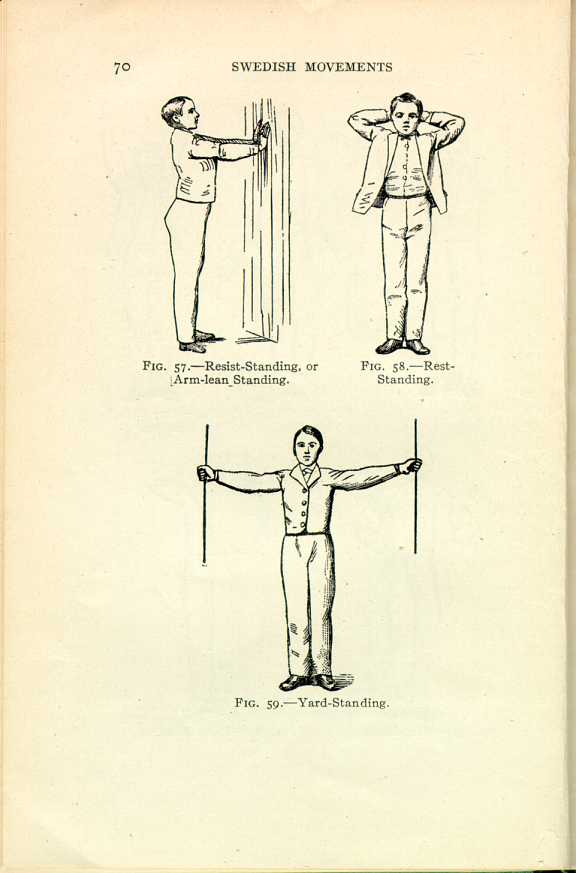
FIG. 58.—Rest-Standing.
[Description: Drawing of a man standing, his palms against the back of his head and his elbows pointing out to the sides. ]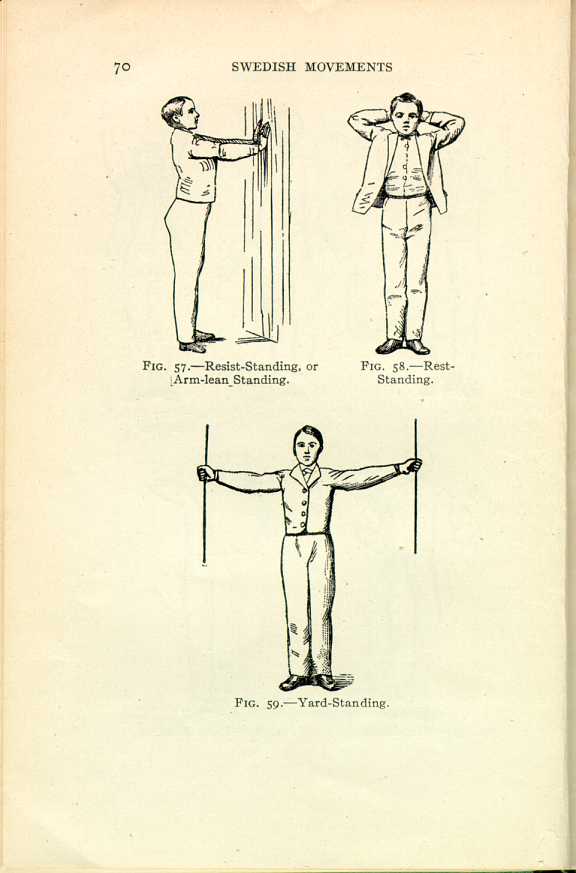
FIG. 59.—Yard-Standing.
[Description: Drawing of a man standing, his arms stretched out to the sides and holding two ropes. ]71 - 3. With the Trunk.
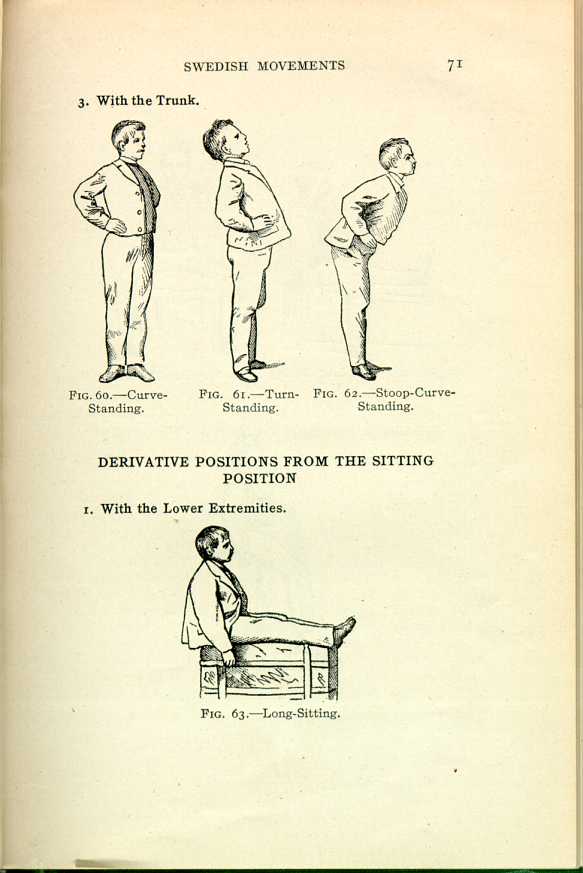
FIG. 60—Curve-Standing.
[Description: Drawing of a man standing, his hands on his hips and his stomach pressed forward. ]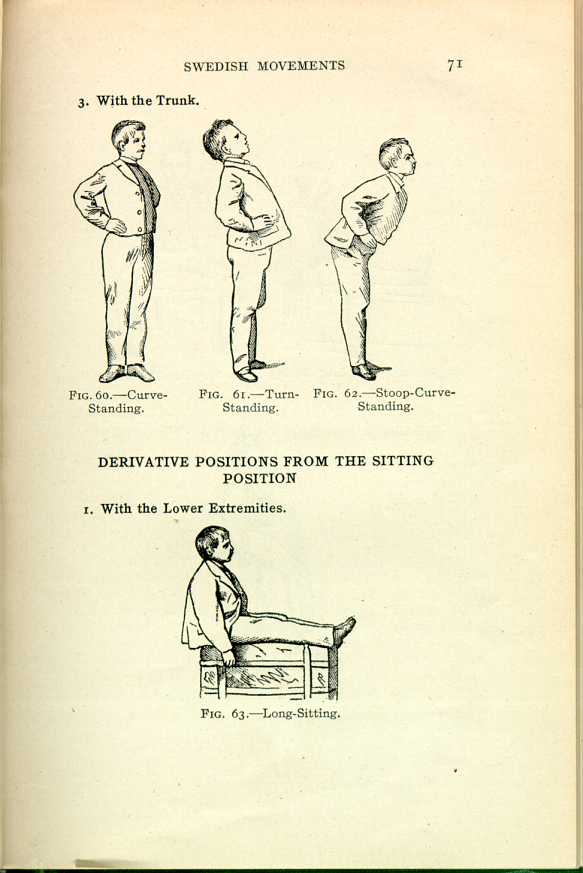
FIG. 61.—Turn-Standing.
[Description: Drawing of a man standing, his hands on his hips and his body leaning slightly to the back. ]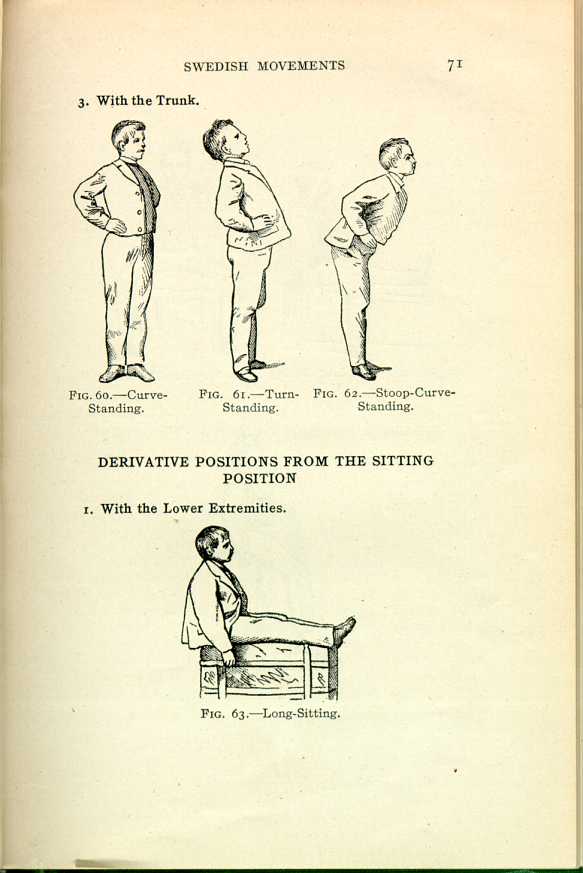
FIG. 62.—Stoop-Curve-Standing.
[Description: Drawing of a man standing, his hands on his hips and his body leaning slightly to the front. ]
DERIVATIVE POSITIONS FROM THE STANDING POSITION
- 1. With the Lower Extremities.
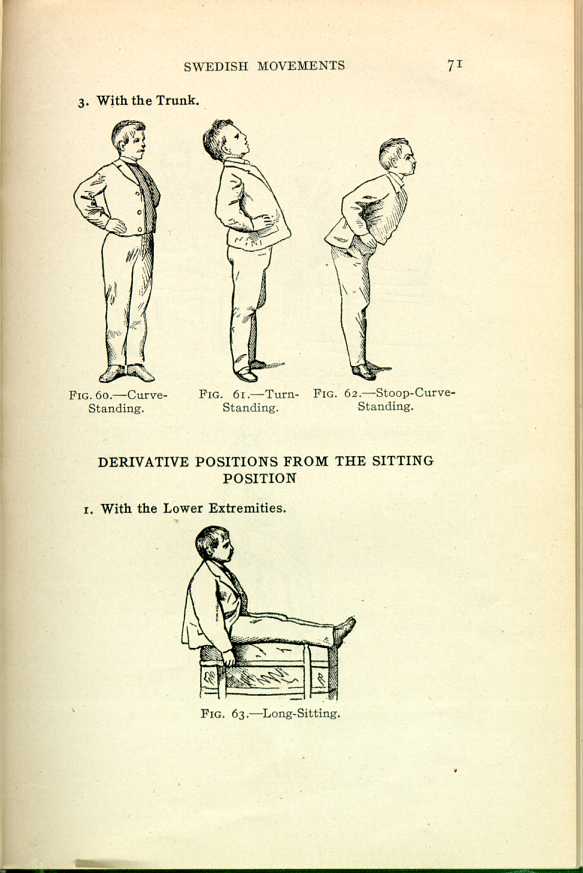
FIG. 63.—Long-Sitting.
[Description: Drawing of a man sitting on a bench, his arms at his sides and his legs stretched straight out in front of him. ]72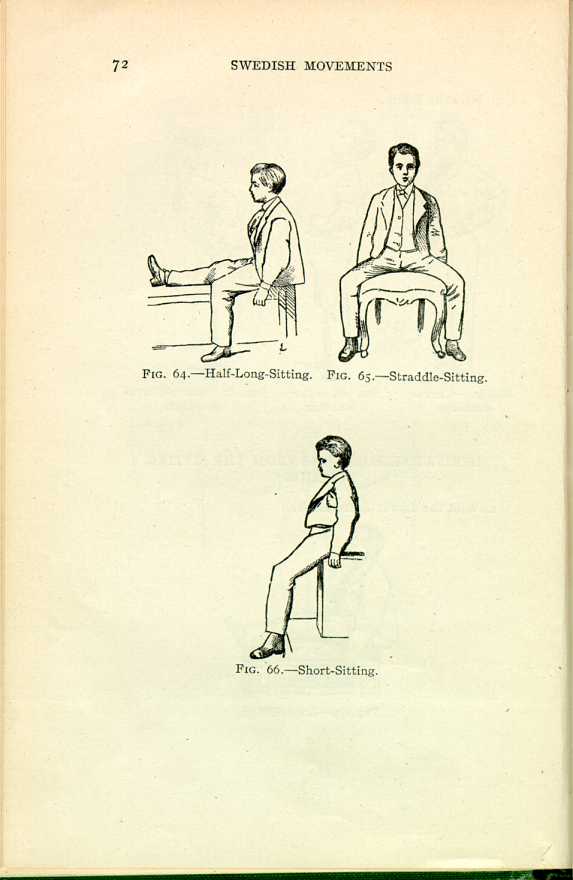
FIG. 64.—Half-Long-Sitting.
[Description: Drawing of a man sitting on a bench, his arms at his sides, one of his legs streched out in front of him and the other leg bent at the knee with the foot on the floor. ]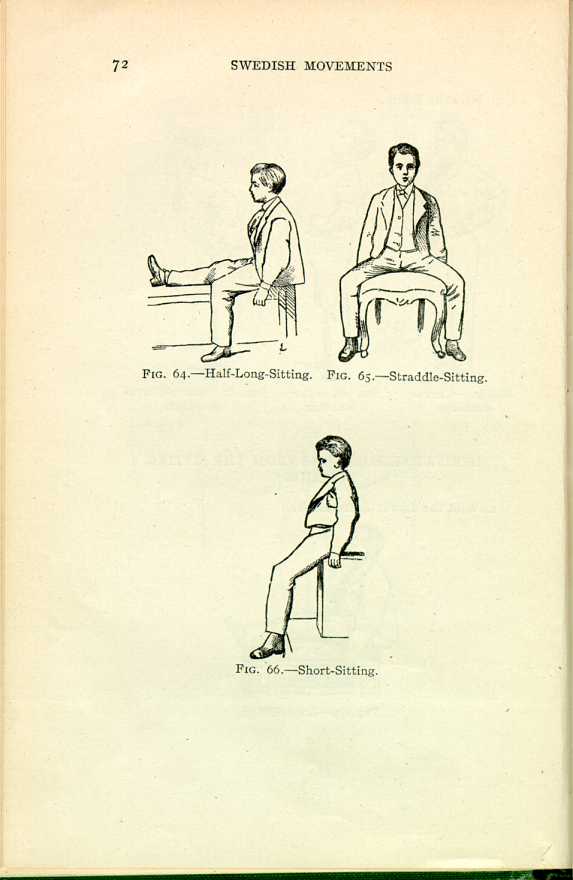
FIG. 65.—Straddle-Sitting.
[Description: Drawing of a man straddling a chair with his knees bend and his feet on the floor. ]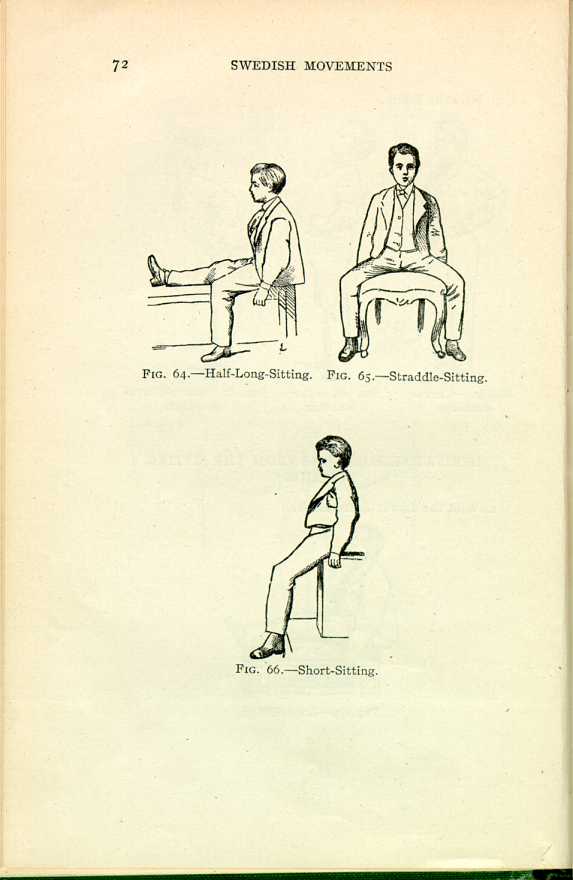
FIG. 66.—Short-Sitting.
[Description: Drawing of a man perched on a bench with his knees slightly bent. ]73 - 2. With the Trunk.
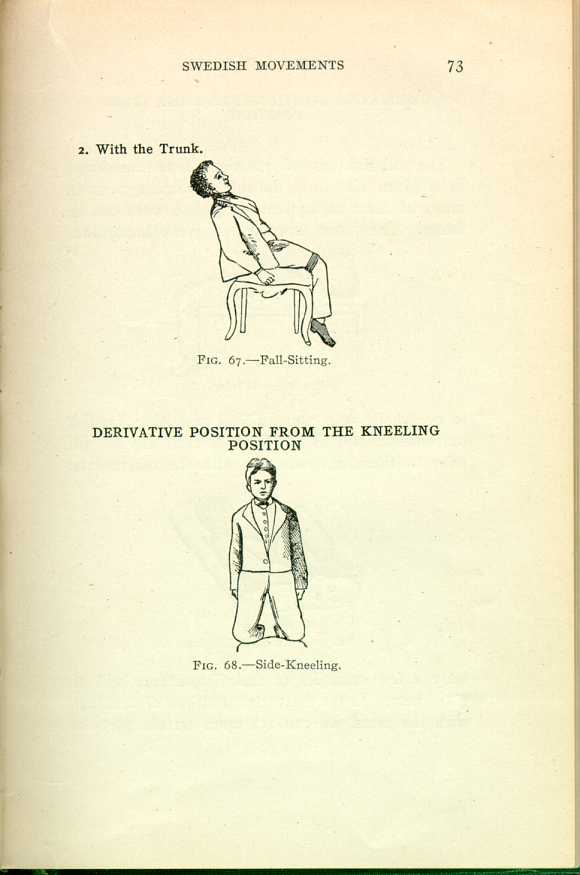
FIG. 67.—Fall-Sitting.
[Description: Drawing of a man sitting sideways on a chair, his upper torso leaning back slightly. ]
Derivative Positions from the Sitting Position
-
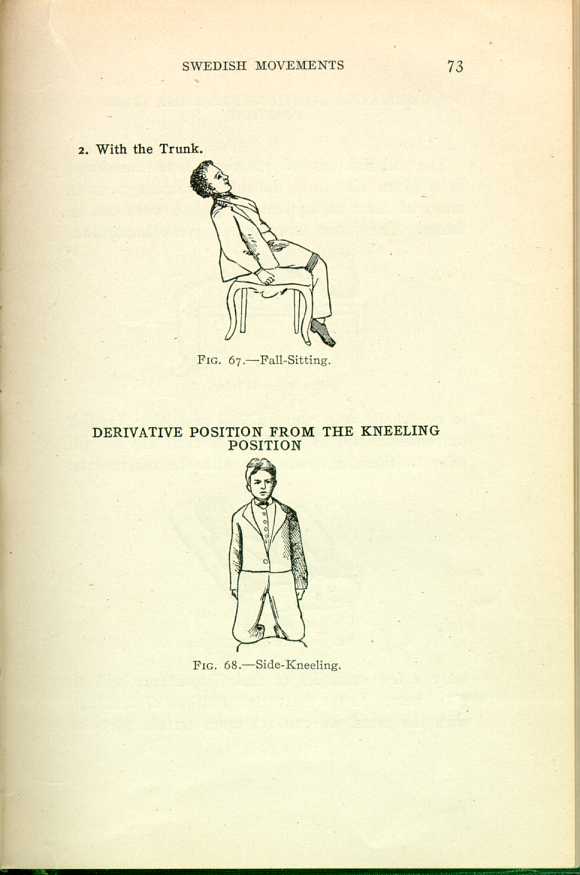
FIG. 68—Side-Kneeling.
[Description: Drawing of a man on his knees, his arms at his sides. ]74
DERIVATIVE POSITION FROM THE KNEELING POSITION
- The subdivisions of positions here mentioned have given rise to a
difficult terminology, as in many of them no equivalent English word can
be found. They are, however, of great importance
to everybody who contemplates practicing Swedish movements, and as to their practical use we will refer to them in connection with the movements.
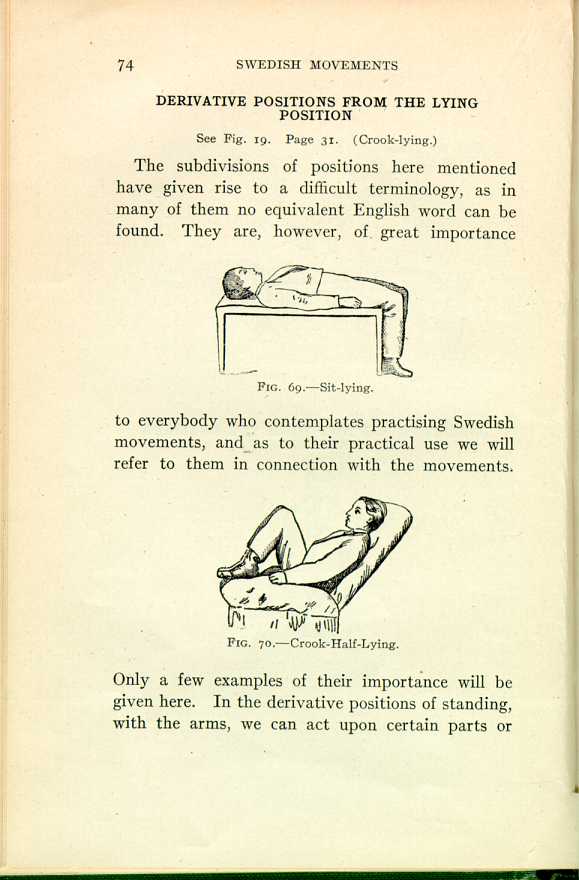
FIG. 69.—Sit-lying
[Description: Drawing of a man lying of a bench with his knees bent and his feet on the floor. ]Only a few examples of their importance will be given here. In the derivative positions of standing, with the arms, we can act upon certain parts or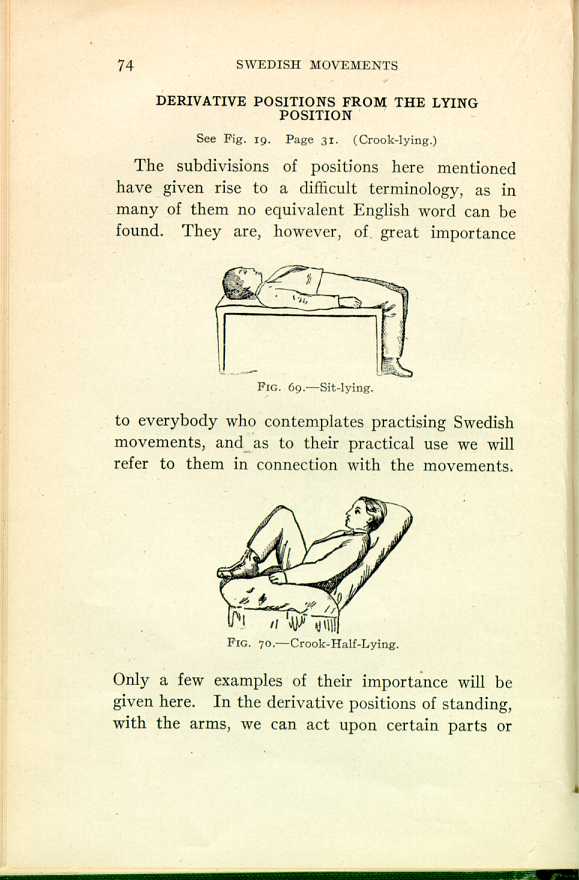
FIG. 70.—Crook-Half-Lying.
[Description: Drawing of a man reclining in a chair, his knees bent and his feet on the chair. ]temporarily prevent certain organs or tissues from performing their functions. ln the positions demonstrated in Figs. 48, 52, 54, 56, the chest is considerably expanded, which causes deeper inspirations.75
DERIVATIVE POSITIONS FROM THE LYING POSITION
See Fig. 19. Page 31. (Crook-lying.)
In cases of "round shoulders,'' "narrow chest,'' etc., it is of great importance to select the proper one of these derivative positions for the movement that is to be used.
| Massage and the Original Swedish Movements | ||